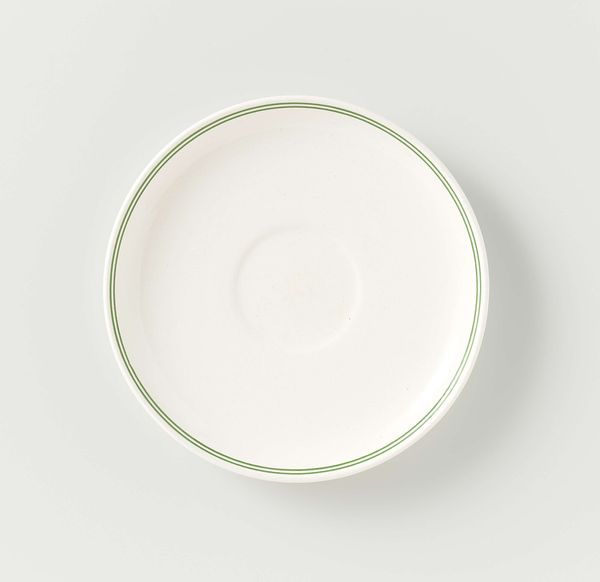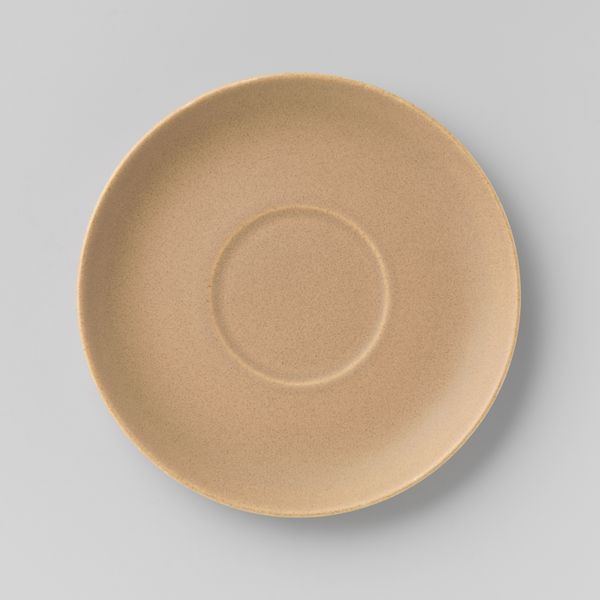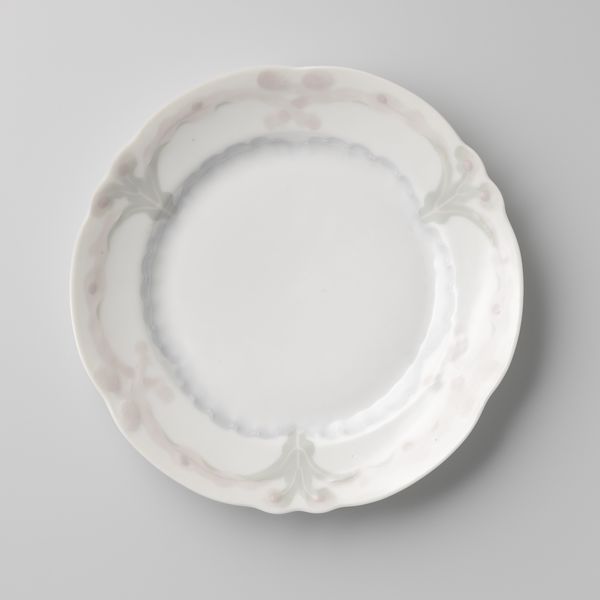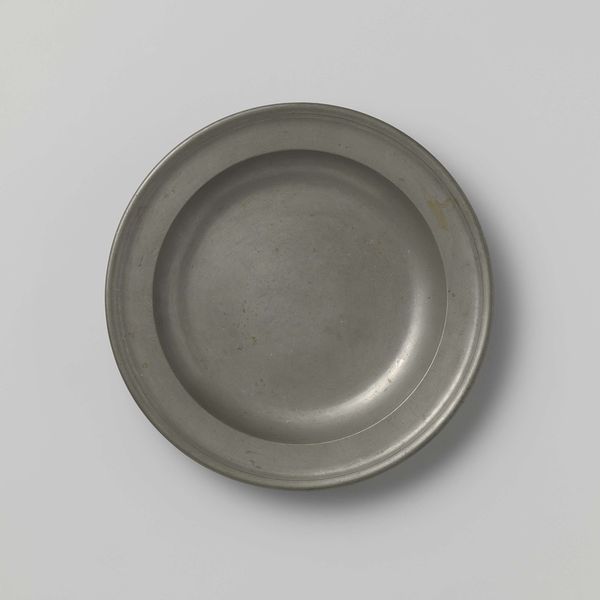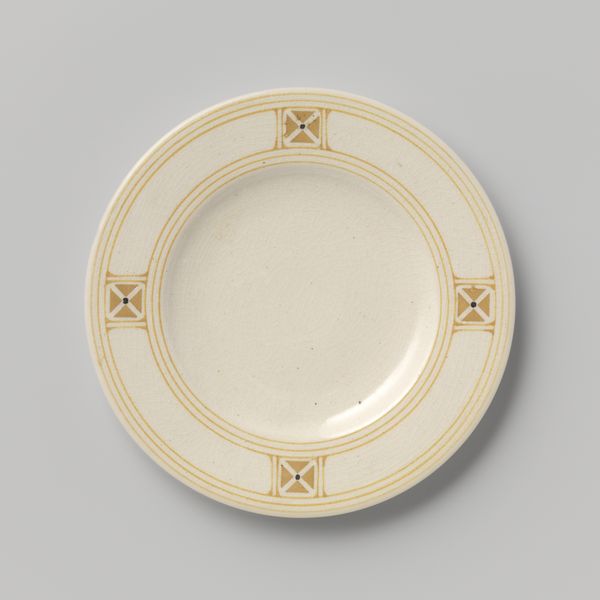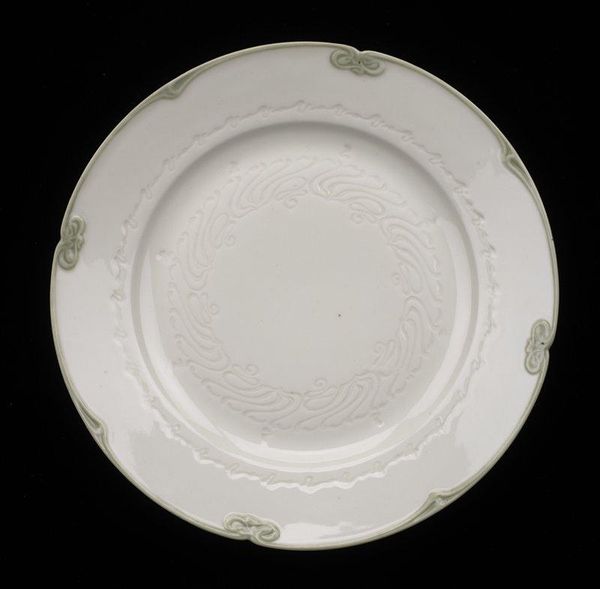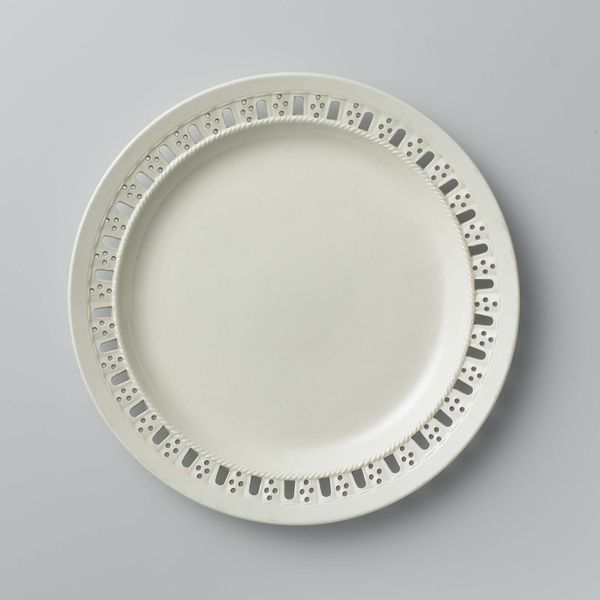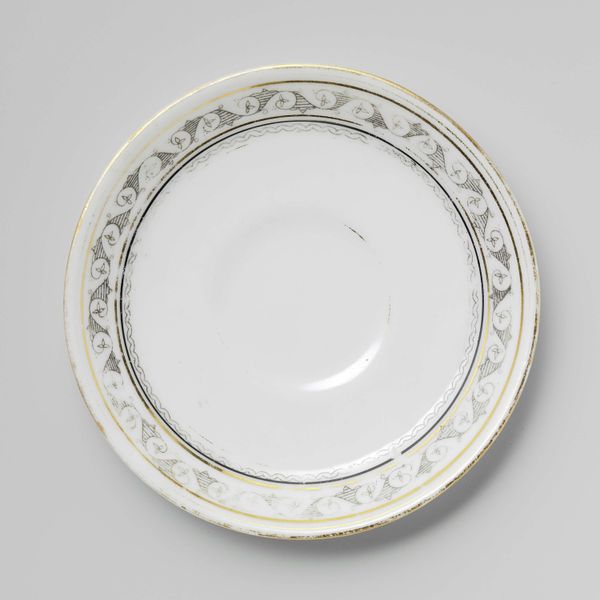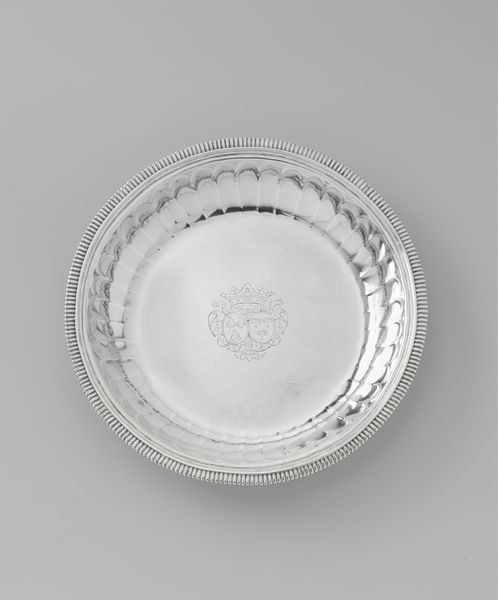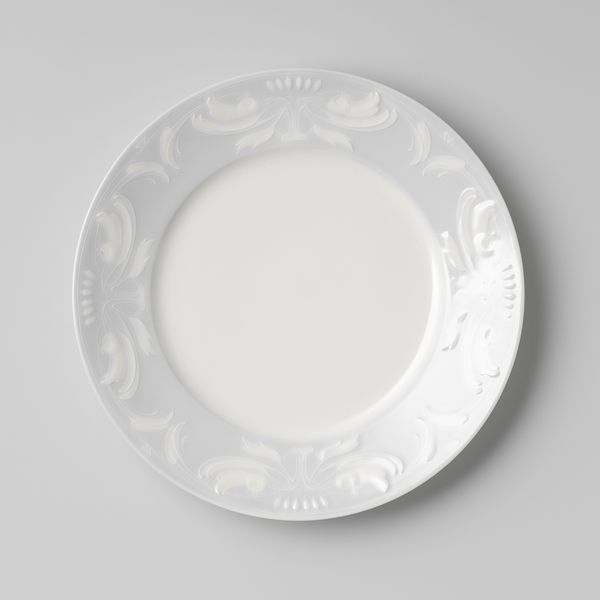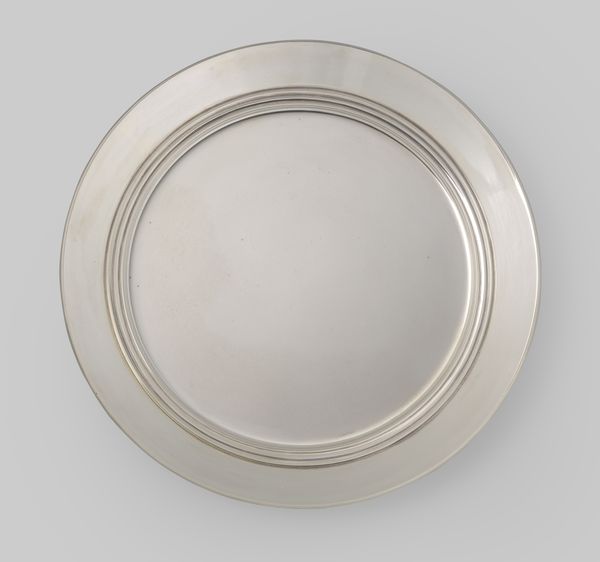
Schotel van een soepkop, van aardewerk en versierd met blokpatroon 1900 - 1925
0:00
0:00
ceramic, earthenware
#
product photograph merchandise
#
advertising product shot
#
product studio photography
#
circular oval feature
#
3d printed part
#
product photography advertising
#
product fashion photography
#
ceramic
#
earthenware
#
product design photgrpaphy
#
graphic design product photography
#
product photography
Dimensions: diameter 17.2 cm, height 1.9 cm
Copyright: Rijks Museum: Open Domain
Curator: Today, we are looking at an earthenware saucer created by N.V. Plateelbakkerij Zuid-Holland between 1900 and 1925. It was designed as a companion piece to a soup cup. Editor: At first glance, there's a pleasing simplicity to this piece. The palette is subdued, and that concentric composition, emphasized by the green banding, gives it a calm, almost meditative quality. Curator: The factory, known for its Art Nouveau and Art Deco designs, produced this during a time of significant shifts in the decorative arts, reflecting a desire to blend mass production with artistic sensibilities accessible to a wider audience. Editor: True, the industrial context is relevant. But if we isolate the visual elements, there's a subtle elegance in the contrast between the matte, slightly crazed surface of the plate and the precise, glossy lines of green. Curator: Crazing was not necessarily a desired outcome. Imperfect glazing can have some functional consequences as well. Yet crazing contributes to a tactile surface effect valued at this time. The question arises about the cultural context in which a collector may admire signs of imperfection in mass produced ware. Editor: Still, these imperfections offer an almost textural counterpoint to that smooth border. It speaks to a certain honesty in the material—allowing the earthenware to express its essential character, despite the imposed design. Curator: It also represents a larger dialogue in early 20th century design--how could mass production be made more accessible and reflect evolving aesthetic tastes in this new social and economic context? These patterns may have evoked feelings about hygiene, about reform, even good housekeeping in a time when those concepts were becoming socially relevant. Editor: Ultimately, though, it is an unassuming object, easy to overlook in a grand collection. Its beauty resides in that understated balance and clean composition. Curator: I agree, and I appreciate understanding it within the social currents and artistic dialogues that shaped its creation and use. Editor: And for me, appreciating that quiet beauty is simply a good reminder that sophistication can live in everyday things.
Comments
No comments
Be the first to comment and join the conversation on the ultimate creative platform.
